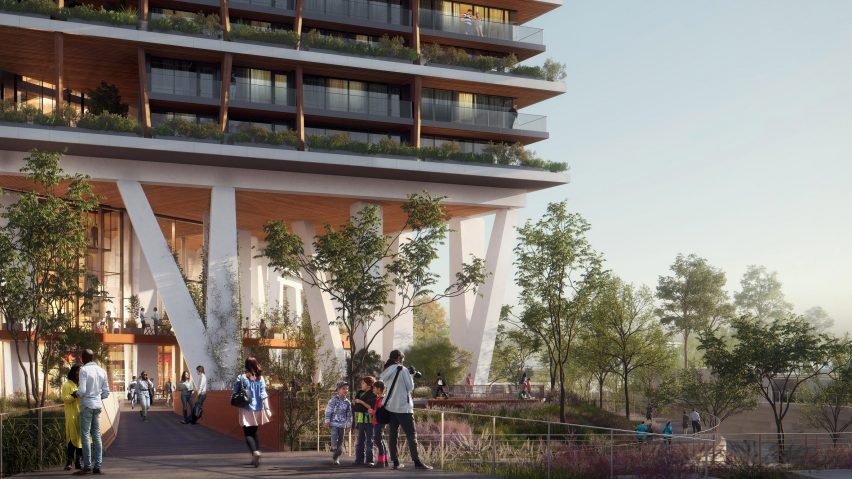
Austin supertalls "not really dealing with the problems" of the city
Rapidly growing Austin is set to see its skyline transformed by the emergence of several supertall skyscrapers in the coming years, but is this a cause for celebration or concern?
As America's second-fastest growing economy, Austin's population is expected to reach 3.6 million people by 2040, and various city initiatives are addressing growth in the region.
The population growth has spurred an influx of global manufacturing industries and necessitated a rise in construction, according to Emily Risinger, the director of planning and urban design for the Downtown Austin Alliance, an NGO involved in advocacy.
"The construction of supertall towers very much fits within this larger context of growth and of downtown Austin being the biggest nexus of activities in our region," she told Dezeen.
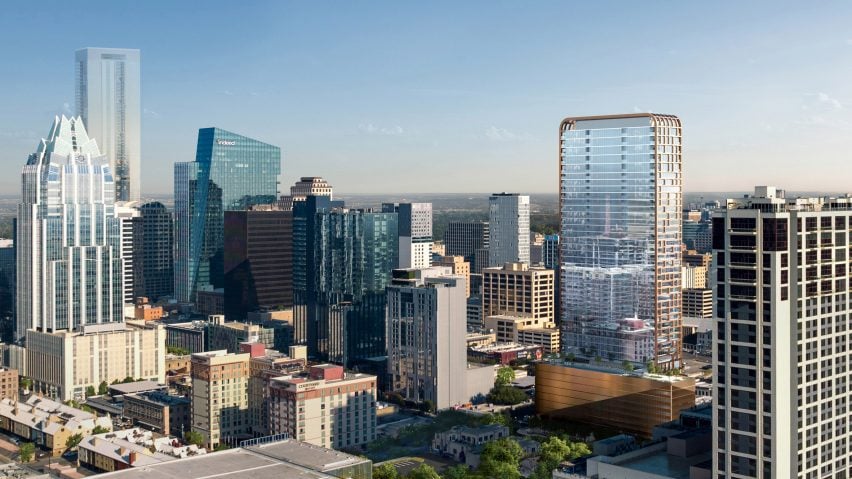
Skyscrapers under construction in the city include Gensler's 875-foot-tall (268 metres) Sixth and Guadalupe mixed-use skyscraper and another by HKS called The Republic, a 710-foot-tall (216 metres) office tower, designed with North Carolina-based Duda Paine Architects that is estimated to open in 2025.
Rising above them all will be Kohn Pedersen Fox's (KPF) 1,022-foot-tall (311 metre) Waterline project, which will be the tallest building in Texas when it is completed.
Supertalls bringing liveliness
Predictably, their presence is controversial among the city's residents, although some see them as exciting symbols of Austin's rise.
"These supertalls are bringing this liveliness and neighborliness back to our downtown because they are really well designed and made for urban living," said Reisinger.
Others are less complimentary, with accusations of elitism levelled at the projects.
Dean Almy, the program director for urban design at the University of Texas at Austin School of Architecture, said that as building heights continue to rise they form "sky cities" far above the public space.
Embedded parking levels on the lower storeys creates a class-dividing dead zone between those who live above the city and the ground-level tenants, he argued.
"They're not really dealing with the problems of Austin," said Almy, who previously served as the chair of the city's Design Commission and the founding chair of the Texas Society of Architects Urban Design Committee.
"You can go a quarter-mile high if you want to. What are the limitations?"
In 2012, the city's Imagine Austin Comprehensive Plan pushed for additional housing that was dense in downtown but preserved the landscape as much as possible.
And since 2014, a variety of code changes have made it easier for developers to build skyscrapers in the city as long as they provide funding for the streestscape, utilise sustainable design and contribute to affordable housing.
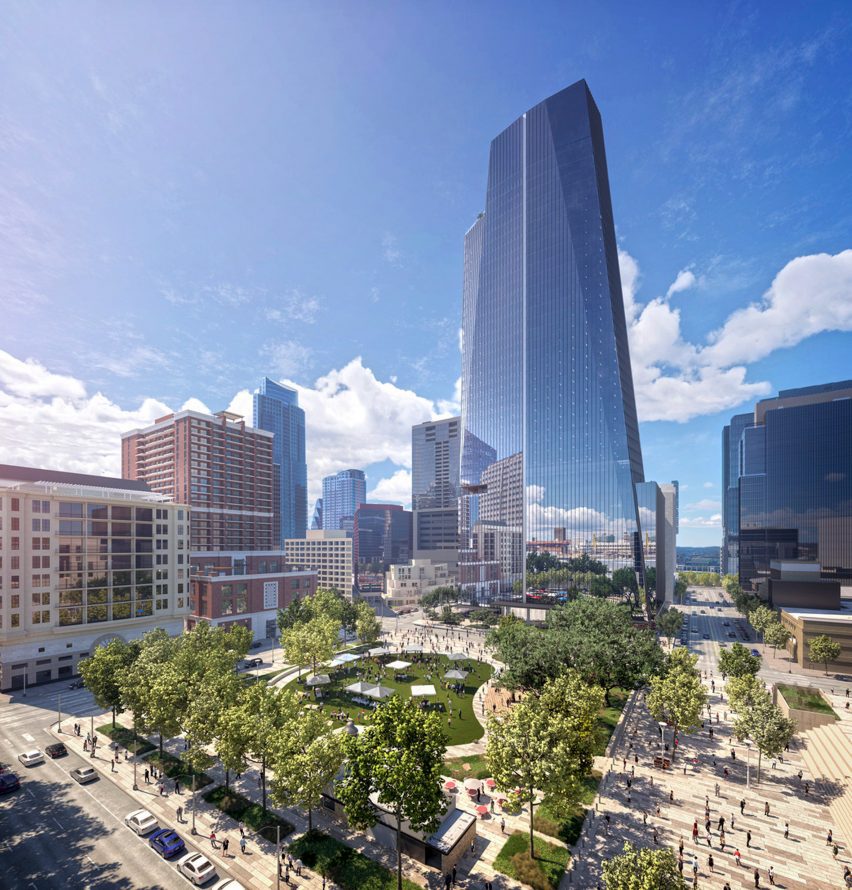
At the same time, Austin has attempted to introduce guardrails to ensure that constructing large buildings doesn't sacrifice public accessibility, urban friendliness or market affordability in favour of breaking records.
For instance, the city's Great Streets program, an urban initiative to increase pedestrian friendliness and access to public transit infrastructure, has taken on the challenge of keeping up with the rapid development.
Sometimes, the city's embracing of supertalls comes into conflict with these priorities – as in the case of HKS's Wilson Tower.
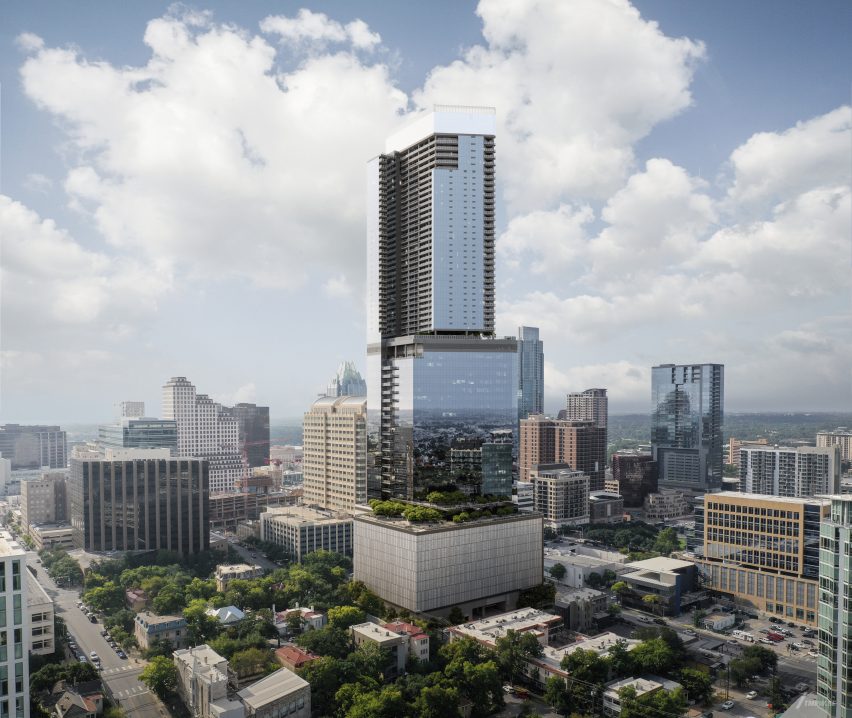
Originally intended to be Texas's tallest building at 80 storeys when its design was unveiled in January, the tower's height was halved following an unsuccessful review with the City of Austin's Design Commission, though the commission was careful to note that it wasn't its decision that prompted the revision.
A non-binding report by the commission said the tower should make changes to comply with guidelines that benefit the general public.
"Downtown belongs to everyone"
The Design Commission pointed to the tower's failure to acknowledge the neighbouring Brushy Square and fully support pedestrian safety and Austin's public art culture.
"Downtown belongs to everyone, and should be accessible to the general public," Austin Design Commission chair Jen Weaver told Dezeen.
"The project sits on one of four open public squares downtown – and did not acknowledge the square," Weaver continued, noting that the architects and developers on the project were frustrated with the commission's motion.
"Large empty lobbies, monolithic walls, unsafe pedestrian zones, tall parking podiums, service spaces fronting public squares downtown – could not be more elitist."
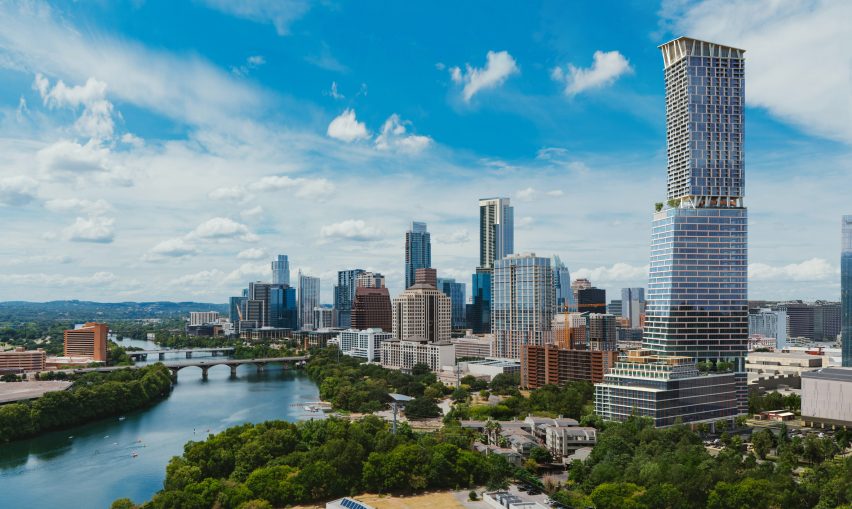
While the original design of the tower did not exceed Austin's 25:1 floor area ratio density cap, it fell short in addressing the city's guidelines for public space and art, pedestrian safety, approachability and connection to the street, and creating a human scale on the ground floor.
As well as reducing its height, HKS Austin and developer Wilson Capital have since reimagined how the tower interacts with the ground floor and the site's public square in order to comply with guidelines and requirements. The company said that economic factors were the deciding factor in the revision.
Wilson Tower is scheduled to break ground this summer.
"We are making some changes to the ground floor in response to the Design Commission's feedback and changes to the vertical nature of the building in response to current market conditions," Wilson Capital president Taylor Wilson told Dezeen in July.
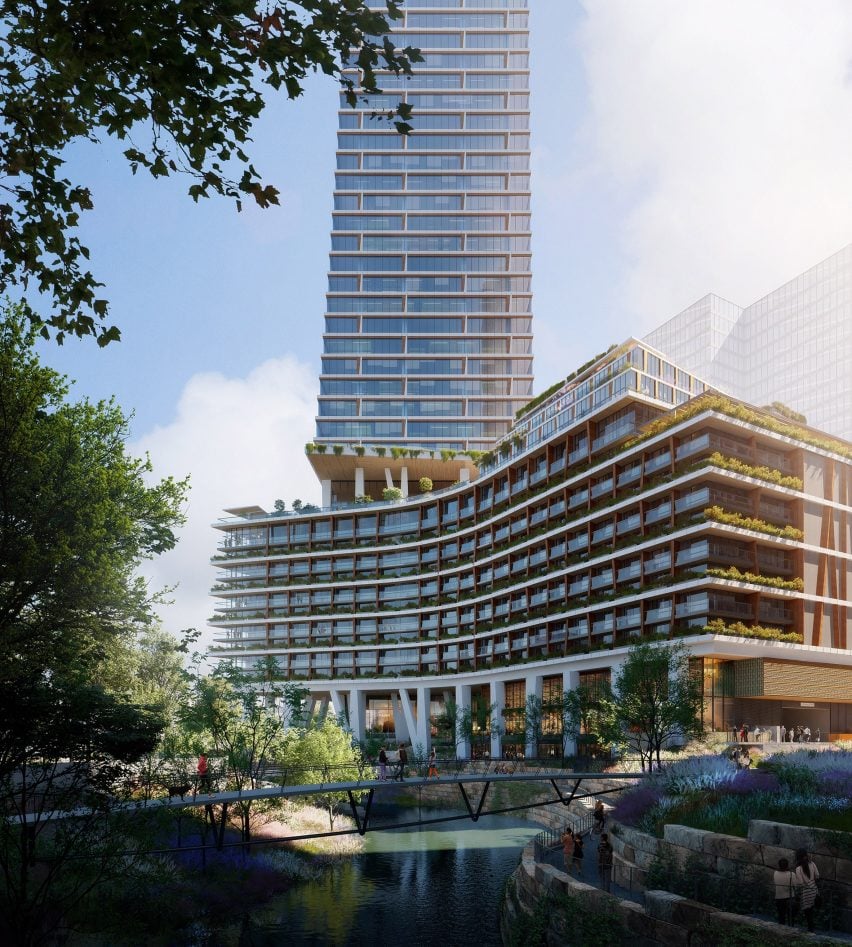
Looking ahead, economic factors are likely to continue playing a leading role in determining the future of Austin's skyline, says Almy.
"It's driven by the market, and as best that I can tell, it seems to have a kind of economic horizon," he said, explaining that developers are hedging their bets with mixed-use programming, rather than building the office towers of the 1980s.
While he doesn't expect Austin's market to drop, saying that a project in the sweet spot is a "relatively safe" endeavour, he is unconvinced about the viability of a tower measuring over a thousand feet (300 metres), when taking into account current interest rates.
"Six hundred feet tall (180 metres) seems to be the sweet spot right now," he said.
A variety of supertall skyscrapers have been built or proposed for the first time in many North American cities such as Brooklyn, Miami and Toronto. Last year, Dezeen rounded up six North American supertalls currently in the works.
Dezeen In Depth
If you enjoy reading Dezeen's interviews, opinions and features, subscribe to Dezeen In Depth. Sent on the last Friday of each month, this newsletter provides a single place to read about the design and architecture stories behind the headlines.